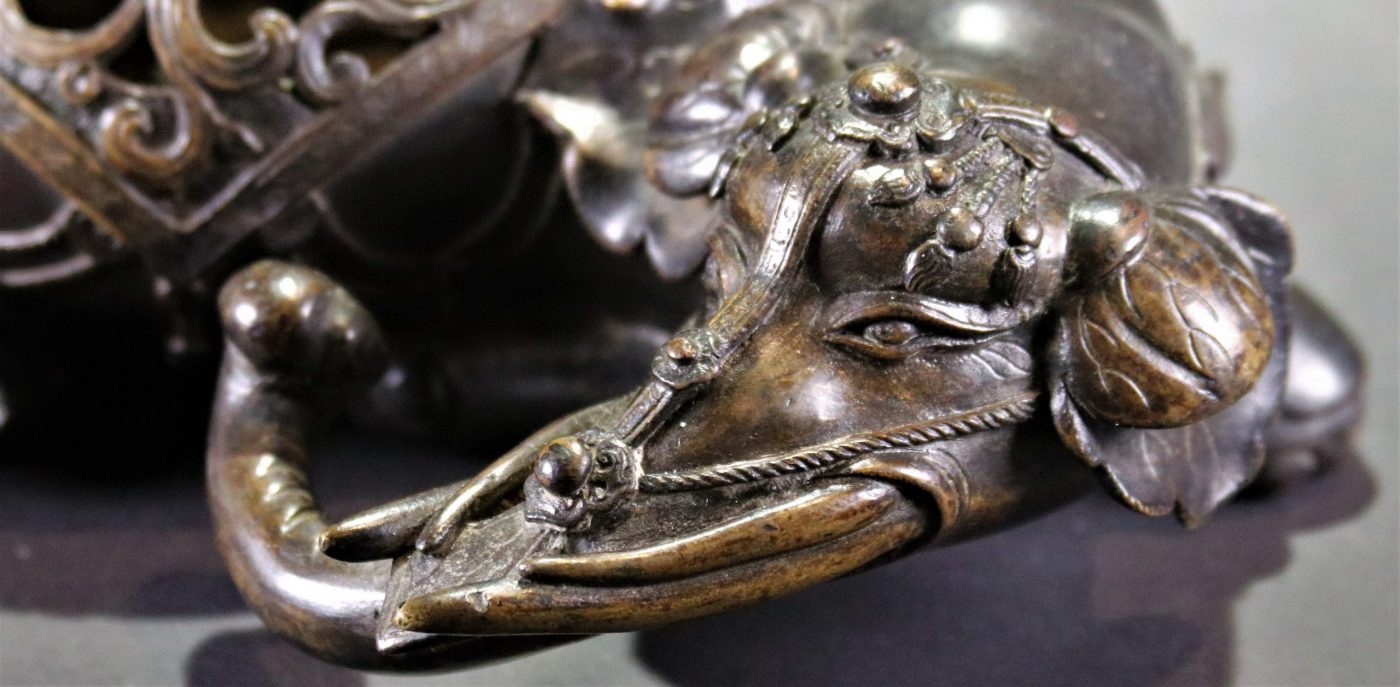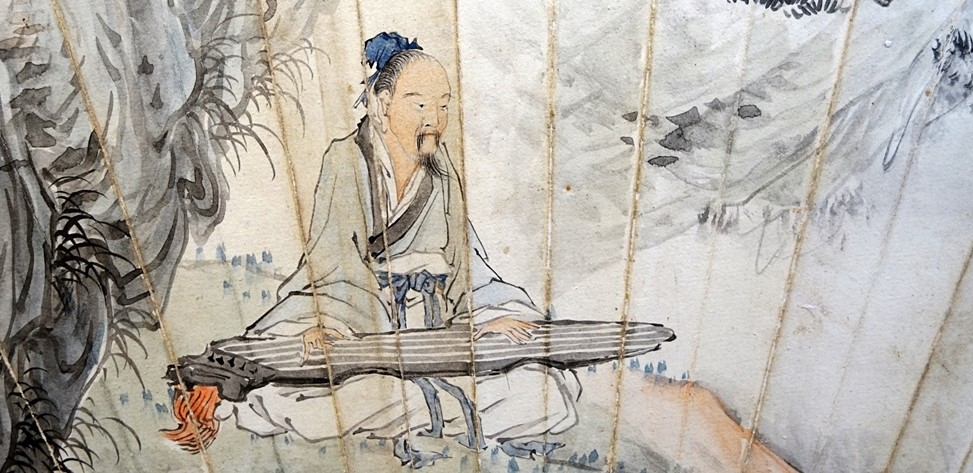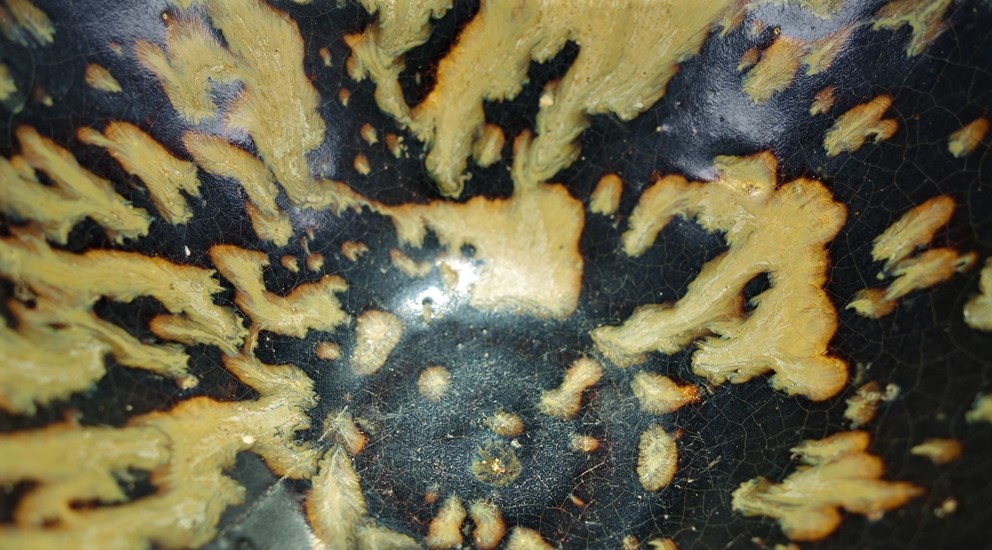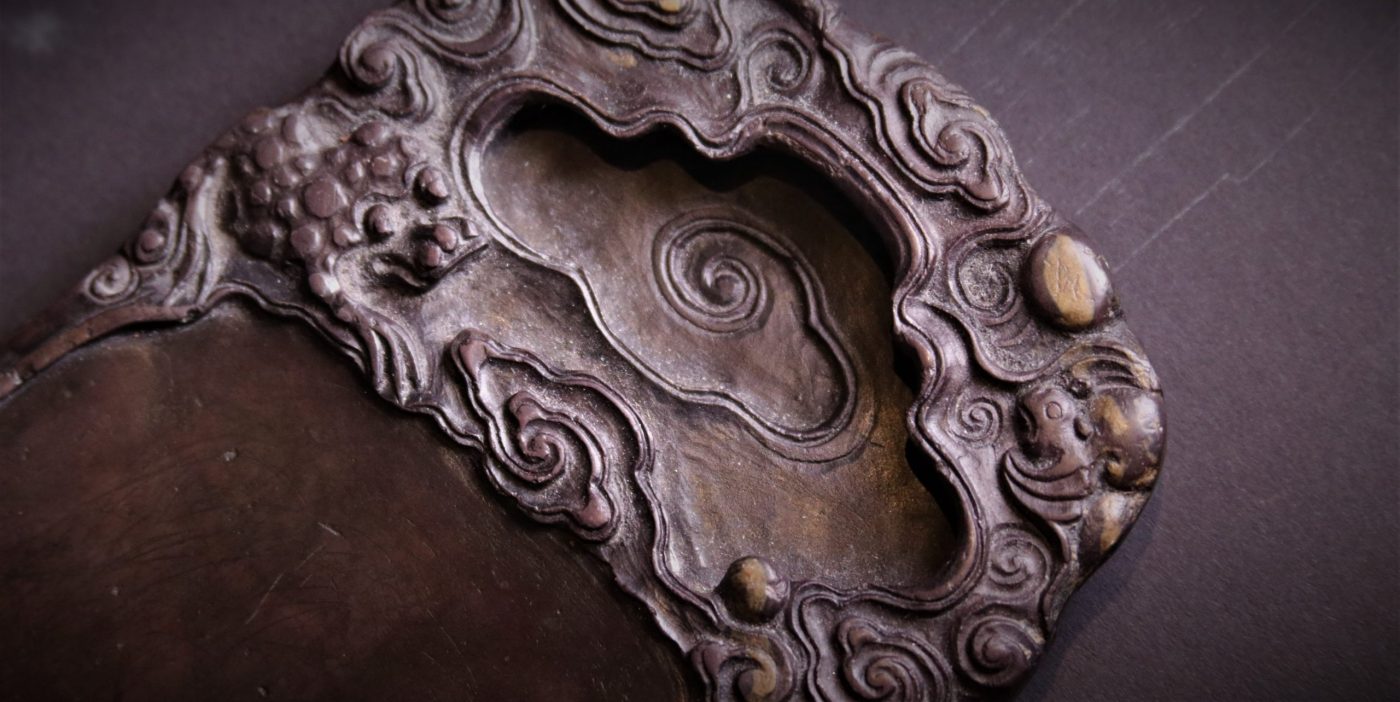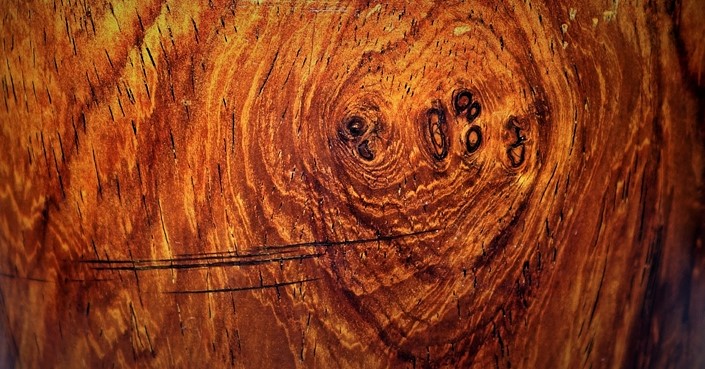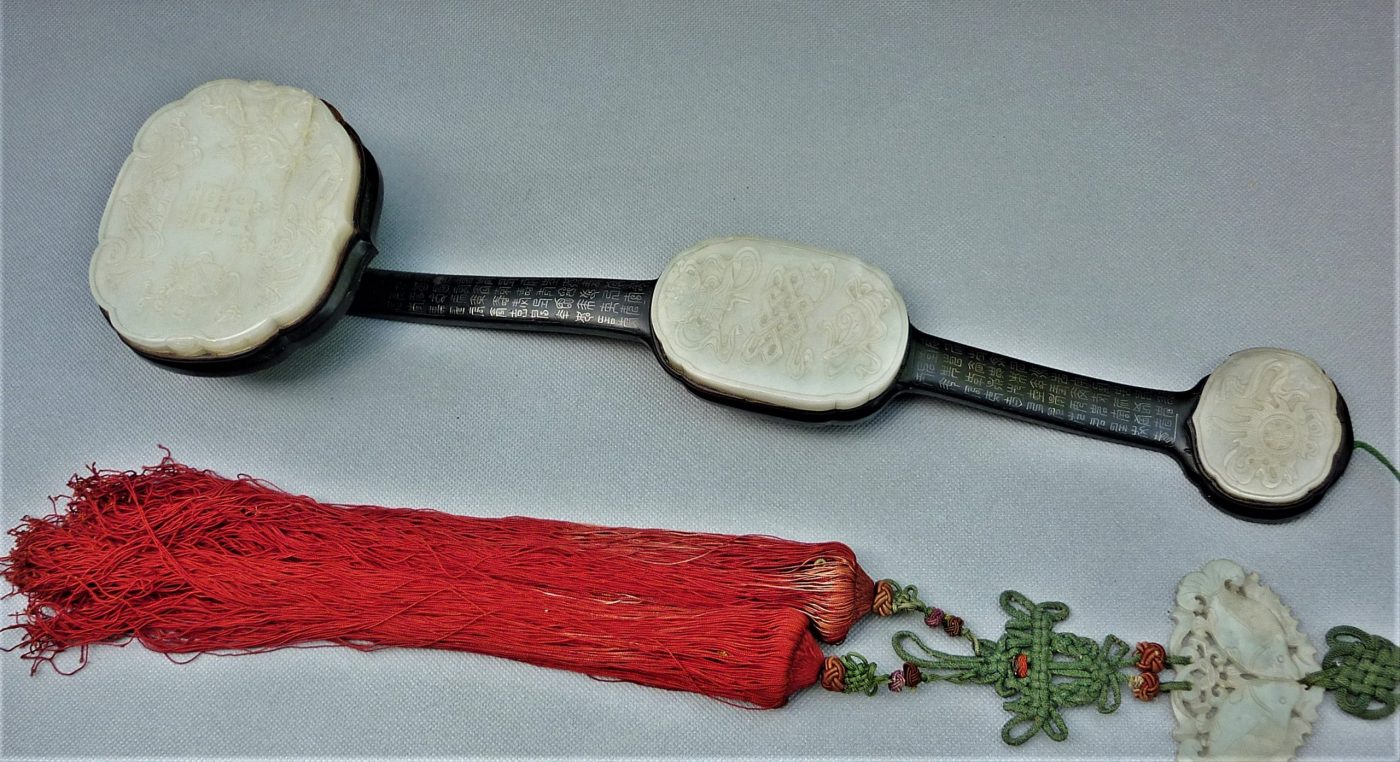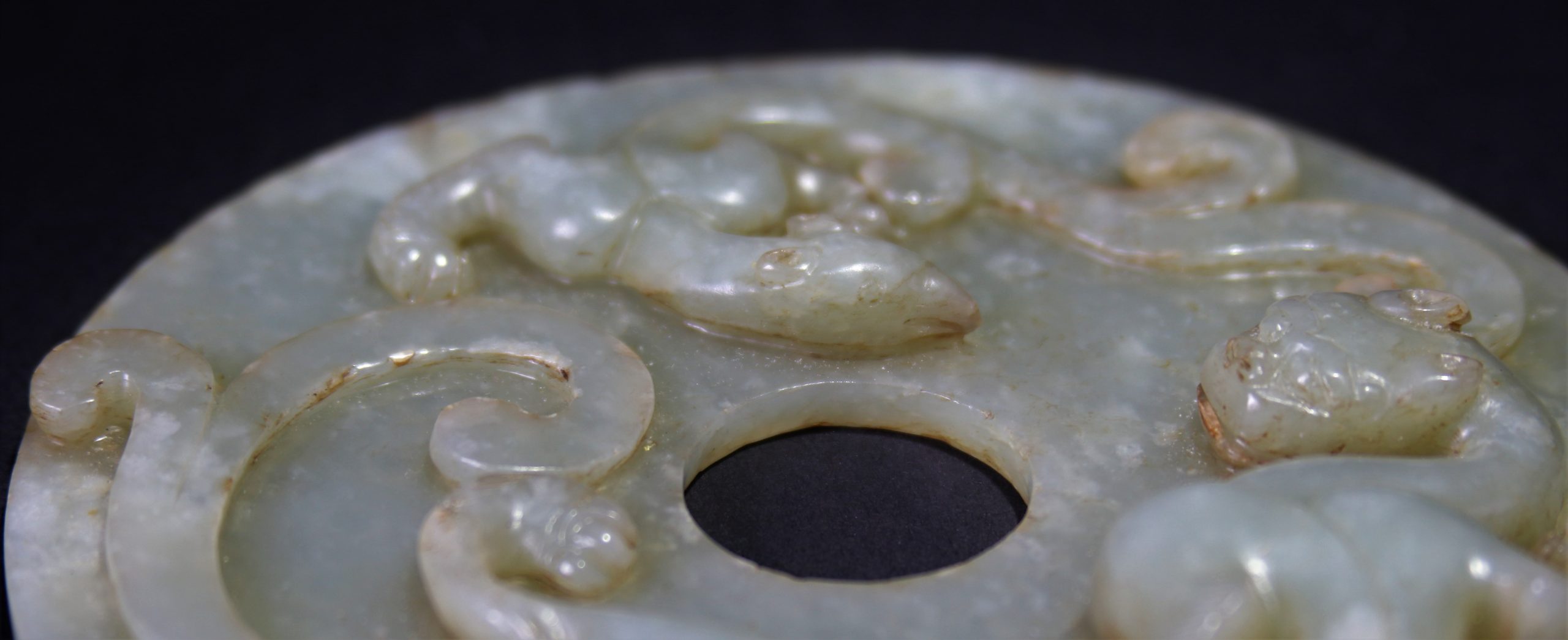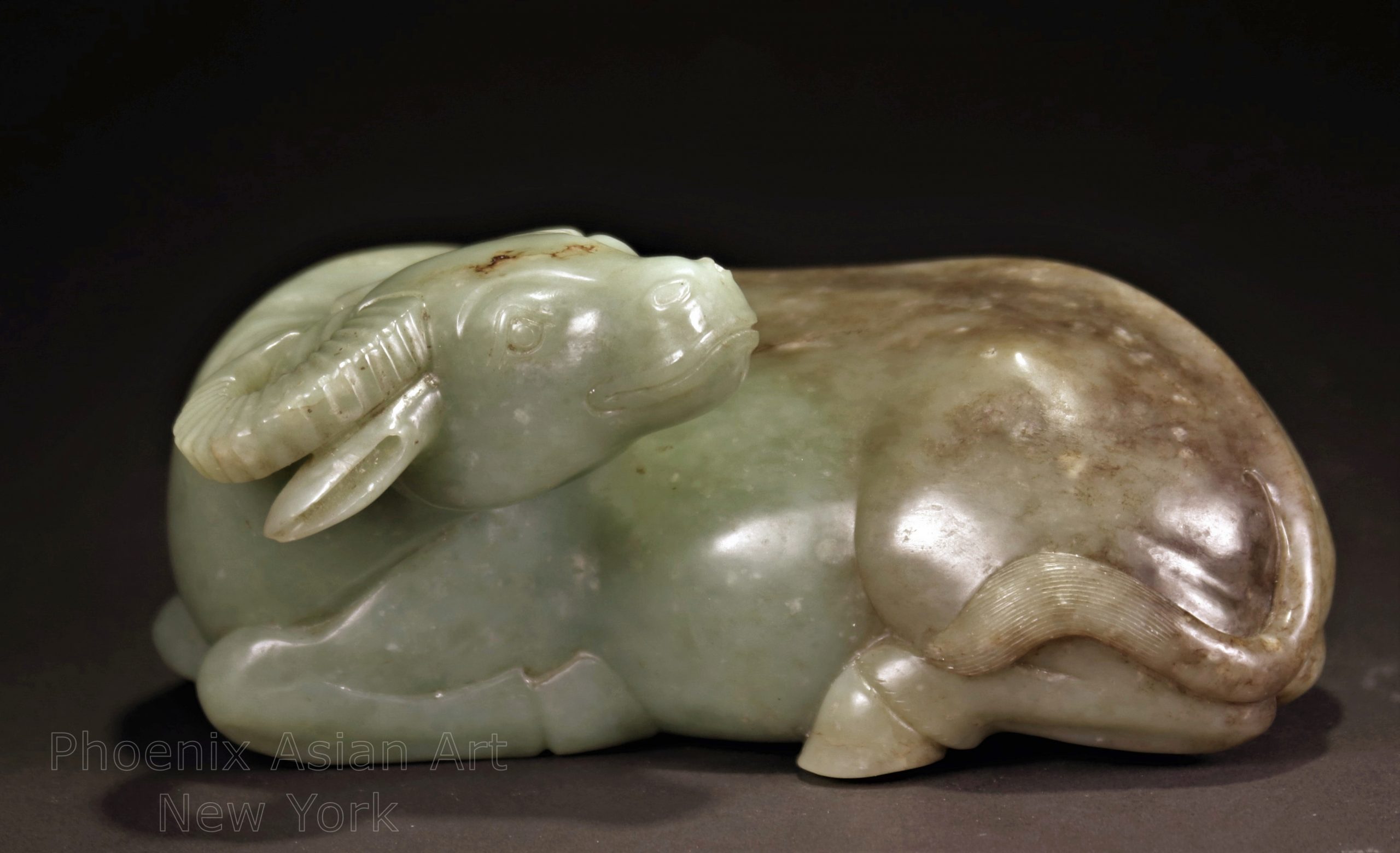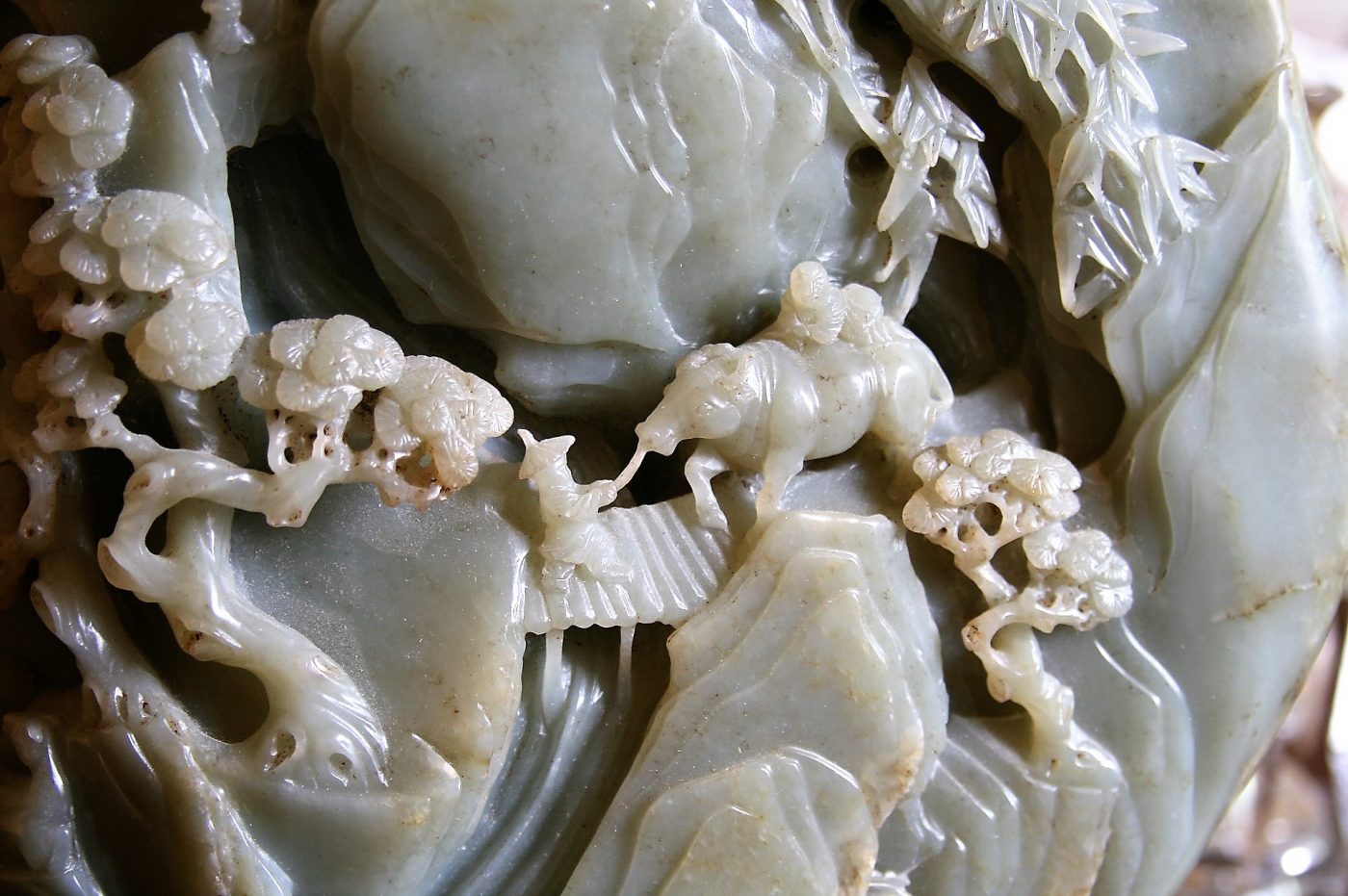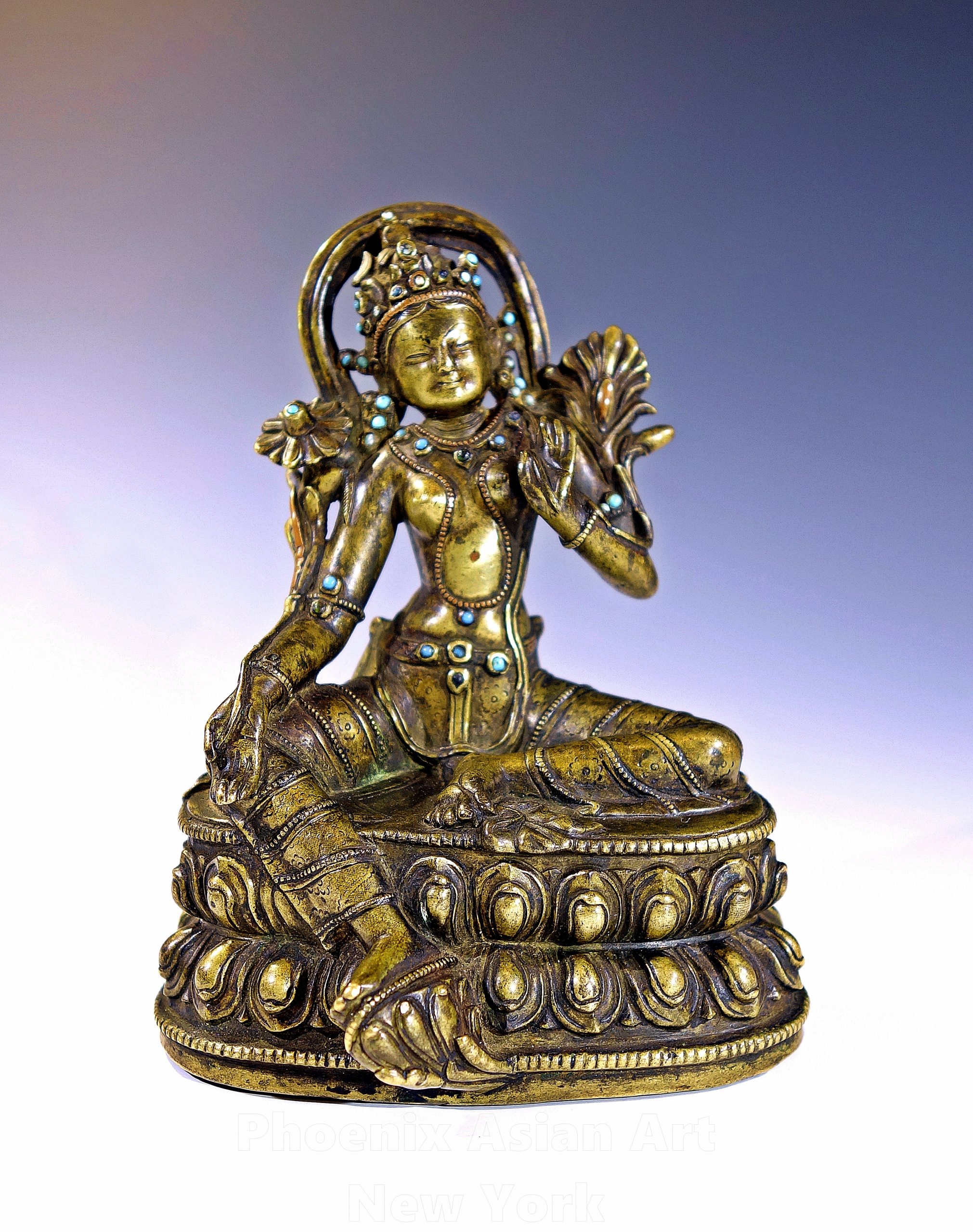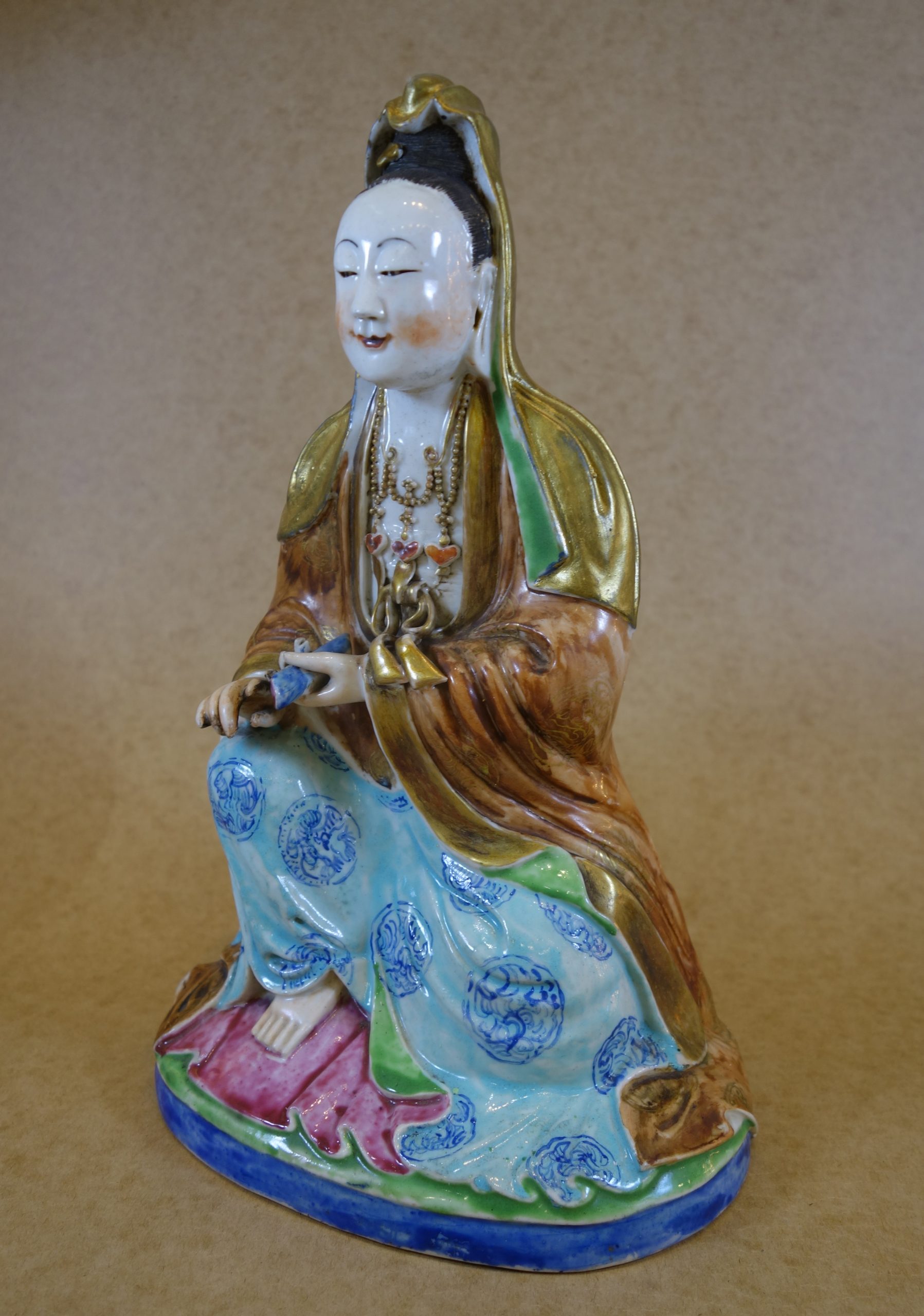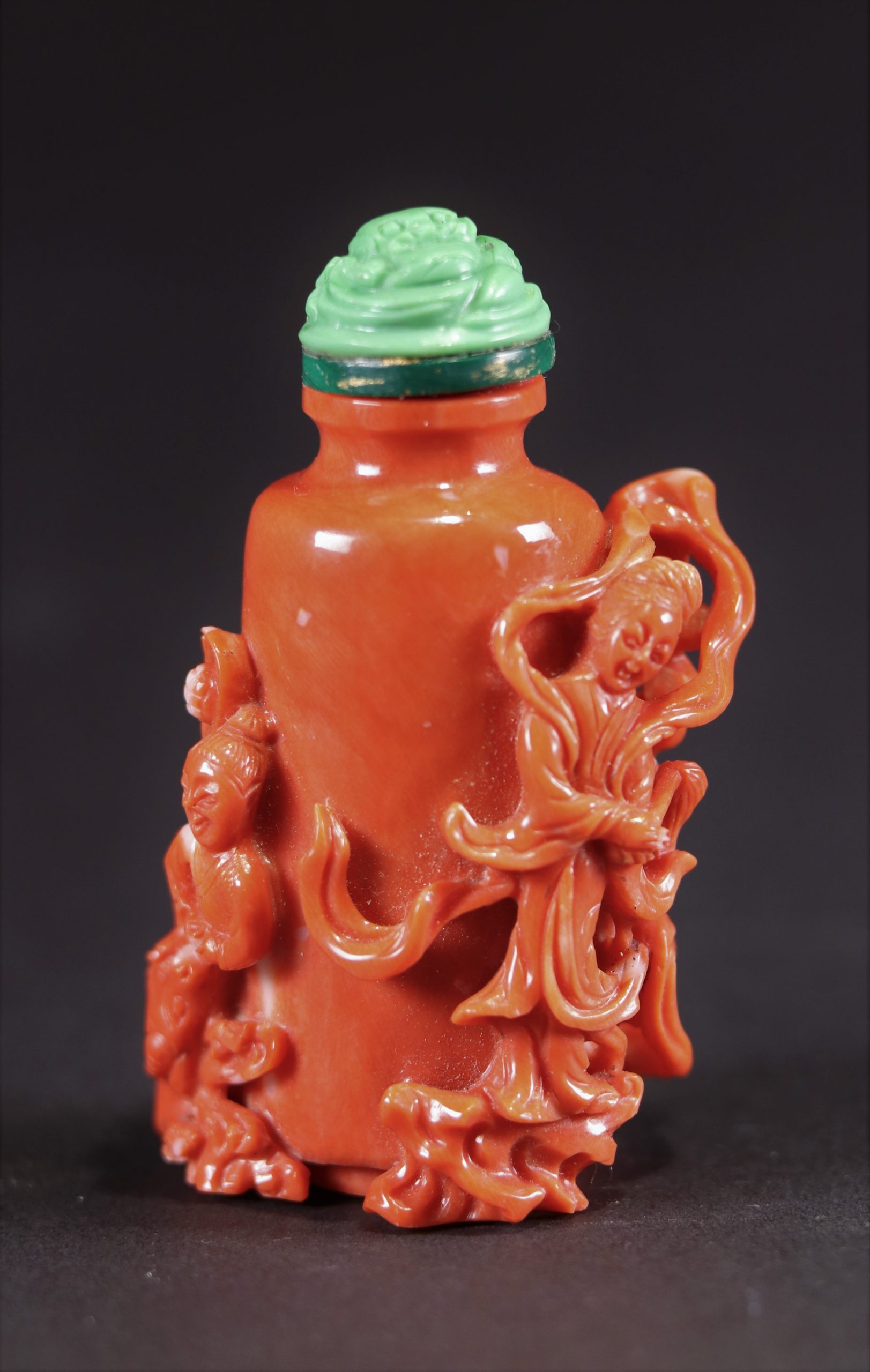Featured Items
Add to Wishlist
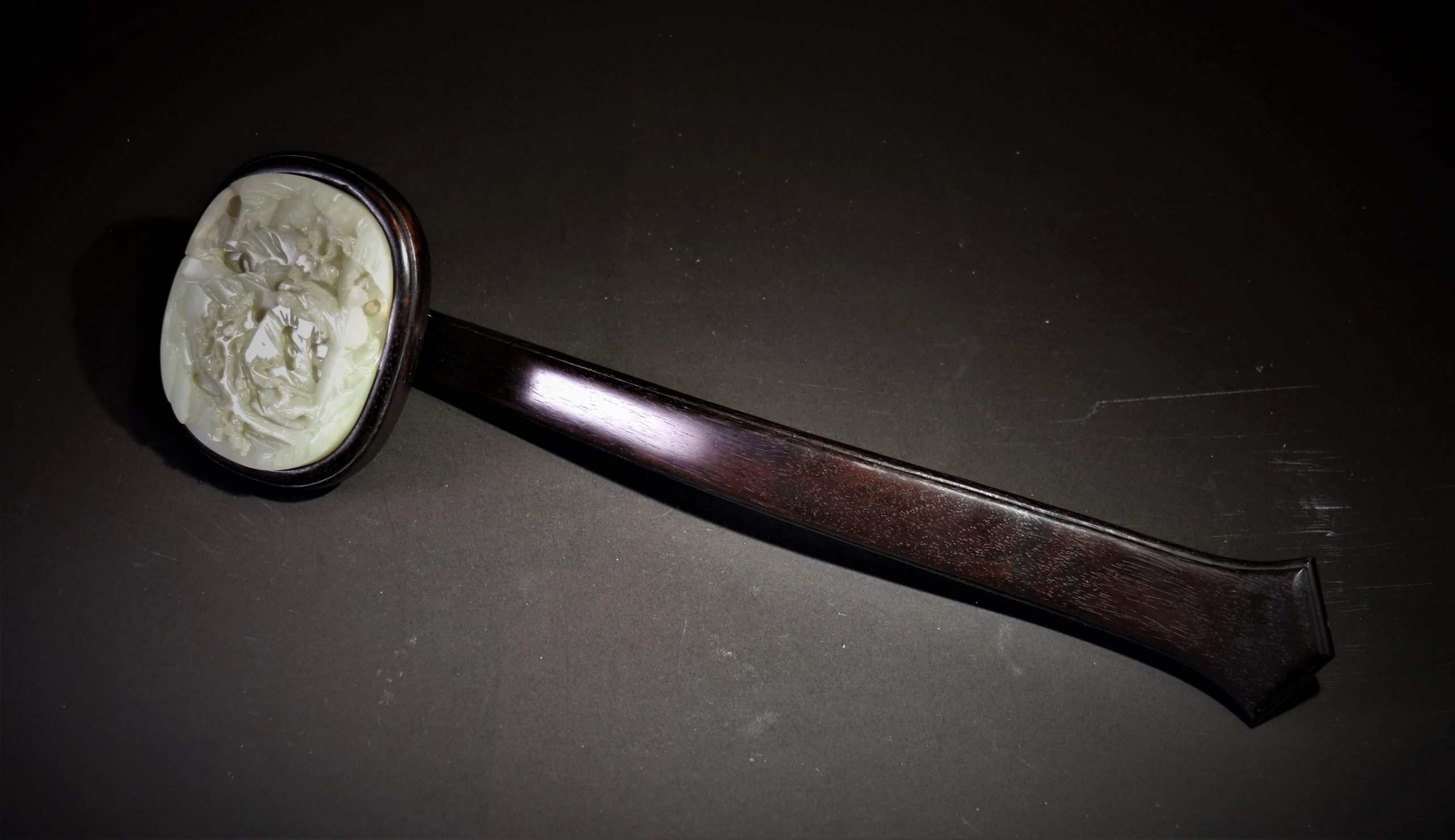
A Chinese Jade Ruyi Scepter with Zitan Wooden Handle 18th Century 清十八世纪紫檀柄玉如意
A Chinese Jade Ruyi Scepter with Zitan Wooden Handle of oval outline, deeply carved with a scene of a sage and attendant on a mountain path, walking between trees with swirling clouds above, the finely carved jade stone inset into the head of a zitan scepter with an elegantly curved shaft, terminating in a triangular tip with a bull-nose perforation. The jade carving is typical work of 18th century qianlong period, and was likely from the work of the imperial work shop. Ruyi (Chinese: 如意; literally: ‘as desired; as [you] wish’) is a curved decorative object that serves as either a ceremonial scepter in Chinese Buddhism or a talisman symbolizing power and good fortune in Chinese folklore.
The jade plaque 3 5/8in (9.2cm) wide. Total length of ruyi is 15″ (38 cm)
清十八世纪紫檀柄玉如意
Add to Wishlist
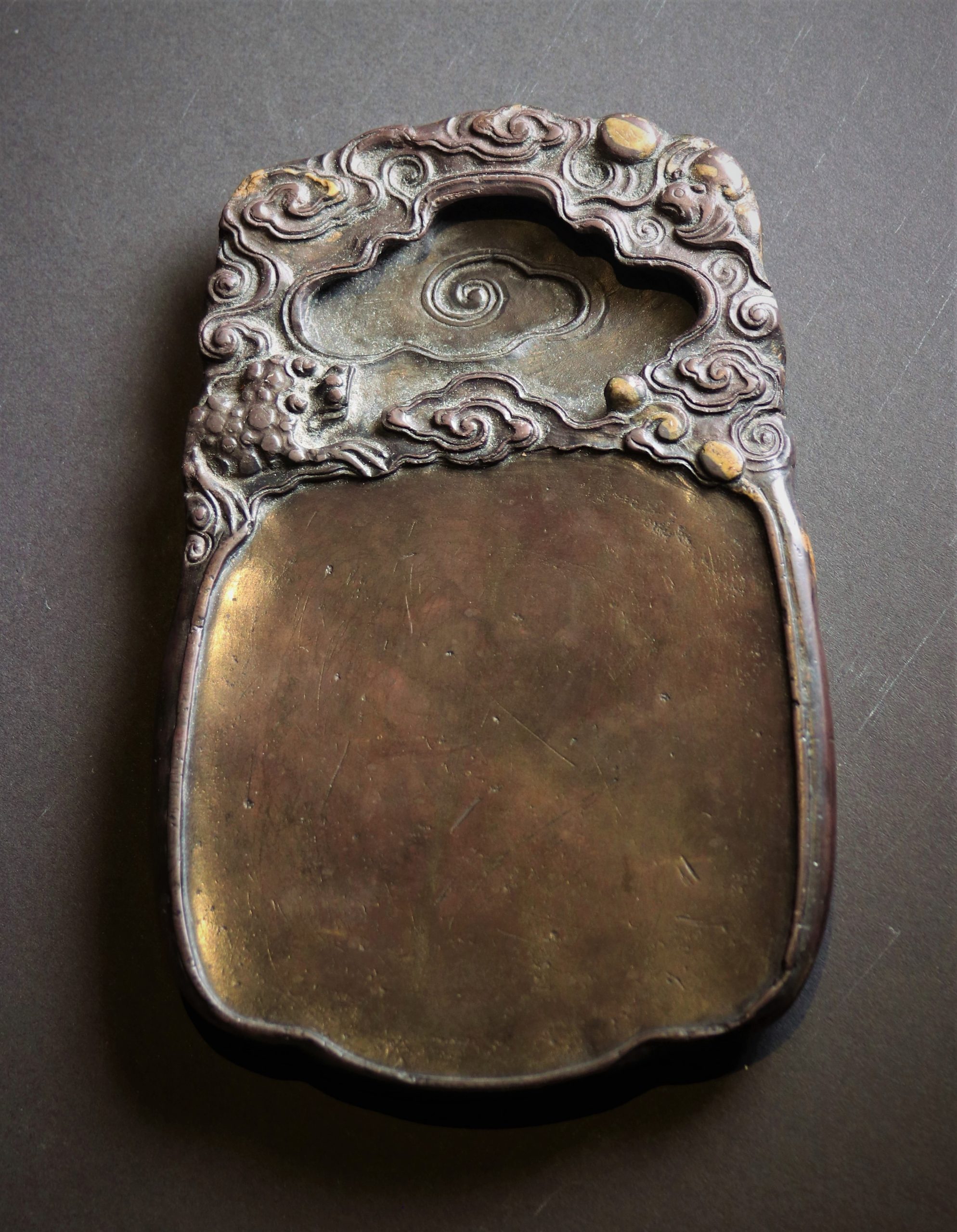
A Carved Chinese Scholar Duan Ink Stone – 17th Century Kangxi Period 清康熙“福在眼前”端砚
Produced in Zhaoqing city, Guangdong province in South China, in over 1000 years, the Duan inkstone has been one of the most famous inkstones in China. Duan inkstones were first produced during the Wude reign (618-626) of the Tang Dynasty (618-907). It is made of Duan stone from the Duanxi River running at the foot of Lanke Mountain, hence the name. Famed as the stone material being very fine and doing no damages to the writing brush. Duan inkstone has had a high reputation among Chinese scholars ever since. The key to making Duan inkstones is collecting the proper stones. It was very hard to hand pick flawless stones in ancient China. Any cracks inside the stone can cause damage during carving. The cave where the duan stone was mined was only about 80cm high, and collectors had to squat, sit or lie down to collect the stone. Therefore, a good old duan ink stone is not easy to come by in ancient China.
Size:
Condition: Very good condition with no damage or repair.
清康熙“福在眼前”端砚
Add to Wishlist
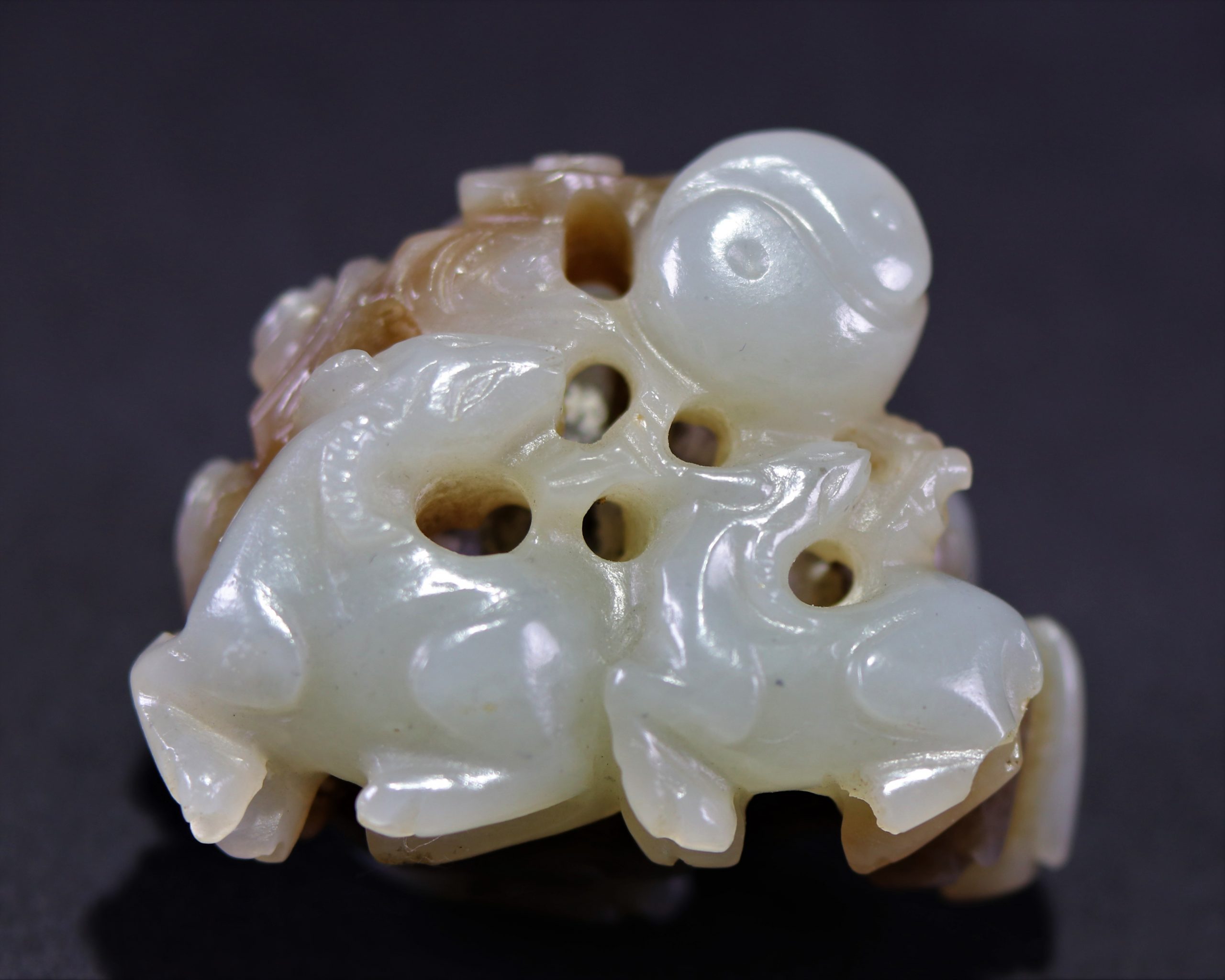
A Chinese Jade Carving of Three Rams – 17th Century 清康熙 三羊开泰 玉佩
The Chinese idiom, San Yang Kai Tai, (三羊开泰) means “three goats bring fortune”.
Add to Wishlist
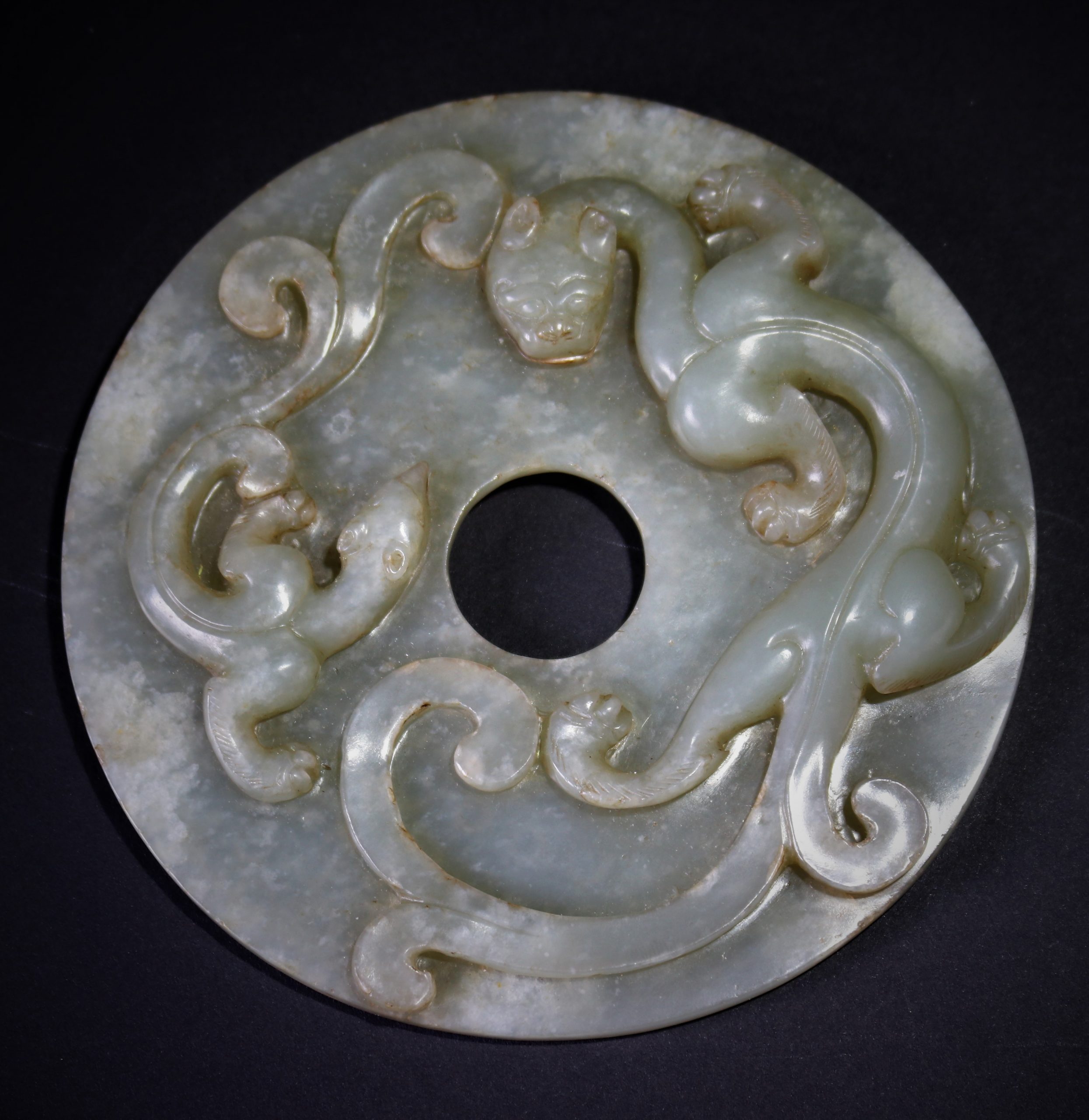
A Rare Chinese Jade Bi with Phoenix and Dragon – 18th Century 十八世纪 龙凤呈祥 谷纹玉璧
The bi is a type of circular ancient Chinese jade artifact. The earliest bi were produced in the Neolithic period. A bi is a flat jade disc with a circular hole in the centre. As laboriously crafted objects, they testify to the concentration of power and resources in the hands of a small elite. Later traditions associate the bi with heaven, and the cong with the earth. Bi disks are consistently found with heaven and earth-like imagery, suggesting that the disk’s circular shape also bears symbolic significance. Jade, like bi disks, has been used throughout Chinese history to indicate an individual of moral quality, and has also served as an important symbol of rank. The elite society had been making the jade Bi disk in almost every dynasty throughout the Chinese history. The jade Bi disk with both Dragon and Phoenix are rare. We all know the meaning of Dragon. Phoenix in Chinese is called Fenghuang. The fenghuang has very positive connotations. It is a symbol of high virtue and grace. The fenghuang and dragon together also symbolizes the union of yin and yang. The Chinese also considered the dragon-and-phoenix design symbolic of blissful relations between husband and wife, another common yang and yin metaphor.
A custom made display stand (as shown in photos) is included.
Condition: In very good antique condition with normal age wear.
Size: diameter
Provenance: From a private New York Collection

